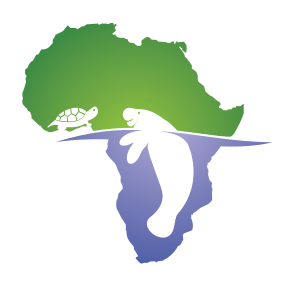I spent Thursday at the university museum in Dakar collecting samples of bone from their archived collection of West African manatee skulls that date back to the 1940’s. This was only allowed after several meetings and much discussion with the museum’s curator (who I’ve promised to share all results with and acknowledge in publications, a small price to pay for such access!), who also then had to search for 2 weeks to locate the key to open the glass cabinet where the manatee skulls are stored. Somewhere there’s also an original register that the specimens were logged into when they came to the museum long ago, but it appears to be MIA for now. Fingers crossed he can find it, because it would provide important background info on the skulls, such as exactly where they were found, if the manatees were hunted or died naurally, possibly their gender, length and weight information, etc.
Speaking of skulls, there’s a huge elephant skull in the front entry of the museum, which I find quite poignant because there are only a few elephants left alive in Senegal today, all in Niokolo-Koba national park in the SE corner of the country. I also recently heard from a friend who studies lions that there may be less than 12 lions left in Senegal, and very few wild carnivores of any kind. I hope this country can take the drastic steps needed to save their wildlife. But I digress, that topic is for another day……
From each skull I took a tiny piece of the spongy nasal tissue bone from inside the nares (that’s the internal part of the nose) for genetics, a tooth for stable isotope analyses, and 1 earbone (if they were present) for age determination. I photographed each skull and wrote down whatever information was available (some had small tags attached, others had writing directly on the skull).
On this one you can see notes about its collection by Cadenat written on the top of the skull
Tomas (with curator Alain Seck) carefully extracts an ear bone from a skull.






